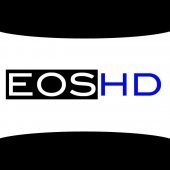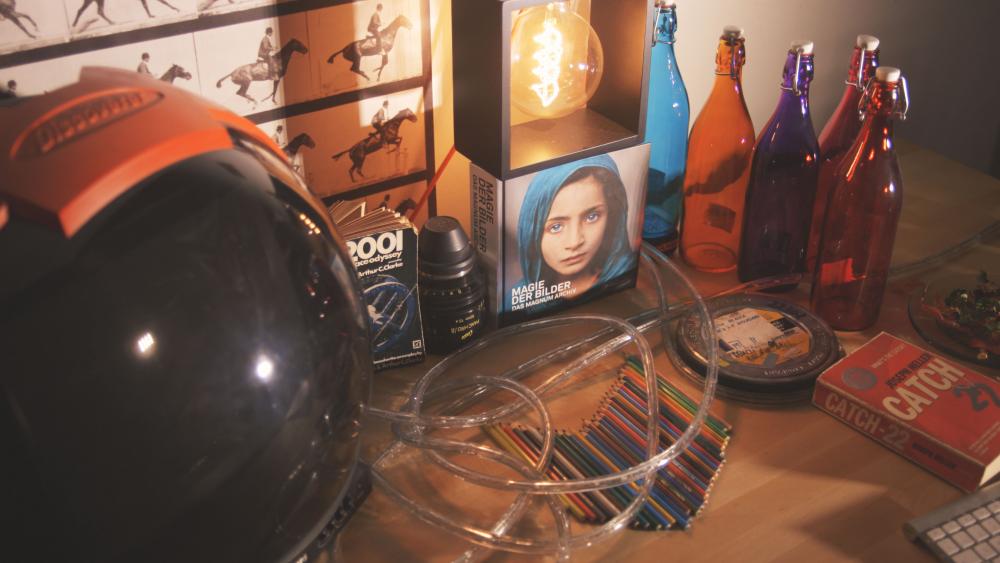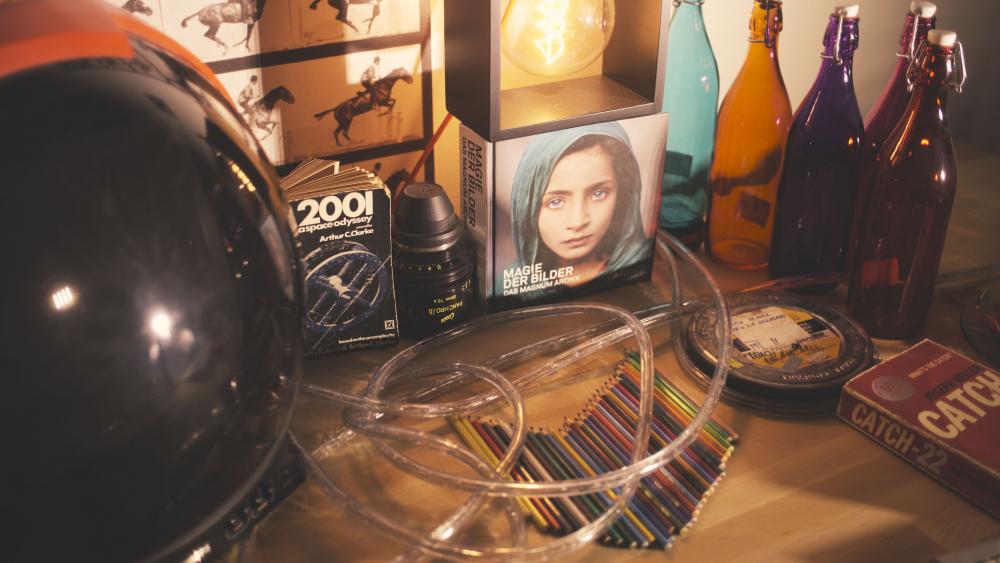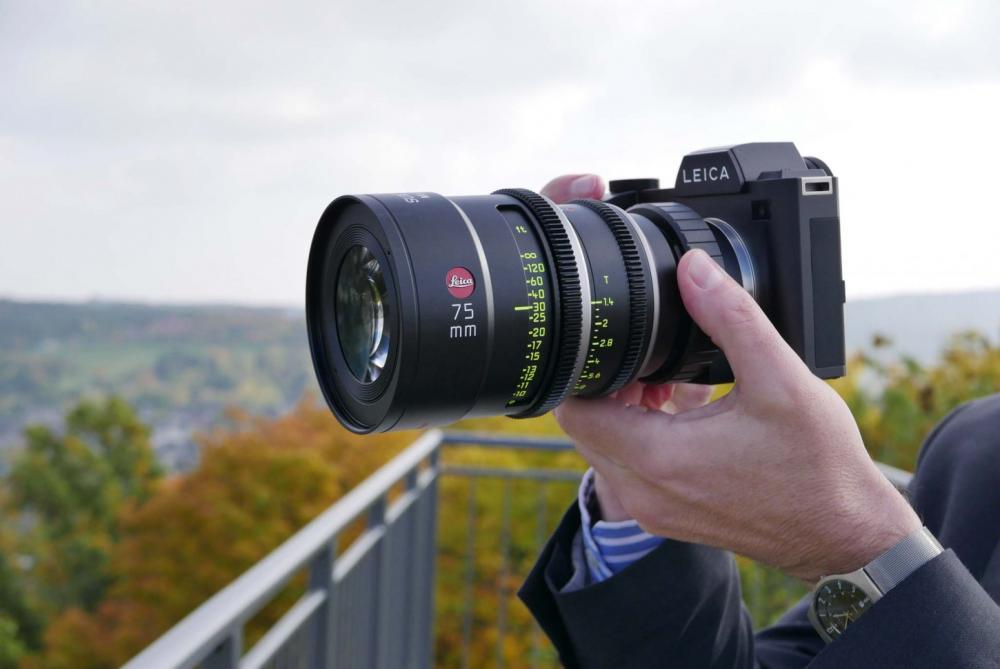-
Posts
15,506 -
Joined
-
Last visited
Content Type
Profiles
Forums
Articles
Everything posted by Andrew Reid
-
Indeed! But hey, Sony didn't notice their reds were pink in S-LOG, so I don't expect them to listen to me on menu shortcuts
-
The 1D C has been very useful to calibrate my LUT for the A7S II and A7R II S-LOG I'd be lost without it as a guide really. Cine 2, etc. certainly easy to grade when dialled down flat but I still prefer to shoot S-LOG... more dynamic range and better LUT compatibility. I like James Miller's DELUTS and they don't work as well with the other picture profiles.
-
Sony seem to have reserved it for now as a selling point of the A7S II. Maybe 6 months later there will be a small chance. But enough people ask for it, it will happen... Like uncompressed raw stills did. There's a solid logic for Sony to add it in... On a shoot with FS7, A7S II both set to S-LOG 3... An A7R II on Super 35mm duties set to S-LOG 2 doesn't make much sense does it!?
-
Big reason I stick to mirrorless rather than the mega expensive stuff. What is the boot time like? No Long GOP codec for 4K like the FS7 or FS5... oh dear! ALL-I does have a nicer motion candace though... 1D C MJPEG is also ALL-I. ALL-I codecs need to be 500Mbit/s for 4K... 100Mbit/s would look much worse than Long GOP at same data rate (because every original frame is stored individually) Have you tried updating the pro video codecs from Apple with FCPX installed? Might help in Premiere too. Upload an original file from each would love to see that. And A7S II with Odyssey 7Q+ should get rid of the compression and get it neck and neck with C300 II. I am trying that combo this week but don't have the C300 II to compare it directly to. Canon slow-mo still shit I see
-
+1 for the LUT loader app. No excuse for Sony not to add View Assist in firmware update to A7R II by the way for our $3k it is a disgrace something as basic as that is missing!!
-
Got a new install going from Clover now and it is indeed more stable. Way fewer quirks to sort out post install. The actual install went well once I deleted the old hidden EFI partition from my USB installer stick, which had the wrong config info on it. You have to get the pre-install config spot on for your hardware, needs a lot of Googling.
-
Nice idea for the Surface Pro!!
-
So is Clover more reliable as well (assuming it is setup correctly of course)?
-
You're right, zero reason for the 5D IV not to have 4K. I have a feeling they still would prefer us to buy a Cinema EOS camera though. Question is... have the pros who Canon have asked what they want in the 5D IV called for 4K strongly enough? I imagine they might have.
-
If anyone is wondering where the 1D C comes in... It's advantage is still colour, and the higher bitrate codec. No mud on whip pans and fast moving scenes. Cleaner fine detail when pixel peeping too. The colour is much quicker to get to how you want it. I fight Sony's colour a lot even with S-LOG 3 / S Gamut 3. You can match them very close but bloody hell it's an effort, sometimes I think I might not have time. For those times, maybe 1D C would look much better. Here's a very closely graded pair of shots from the two cameras, showing what the typical difference is... Canon 1D C always seems to get the reds and blues just as I remember them, and with the Sony it always seems to give blues a green tint you have to skilfully dial out in post and the reds always seem way more purple or magenta than they were in actuality. It really is time a professional colourist banged some heads together at Sony HQ. 1D C - A7S II - Note the blue bottle is now turquoise and the red bottle is purple... That is despite correction already for the problem in my LUT (using Resolve 12). If you try to compensate with all the obvious things... tint or tone in camera, or basic colour correction in Premiere... it isn't the answer, because it messes with other aspects of the image. If you just adjust the hue of the greens and reds in Resolve 12, you can fix them but it still isn't a free lunch... for example if you want warm overall tone to the scene, with blues intact, 1D C is your friend.
-
Actually in APS-C mode the A7R II's 4K is slightly more detailed than the A7S II in full frame. Oversampling from 15MP to 8MP (4K) obviously helped a bit. But it isn't enough for anyone in the audience to notice, I don't think anyway. With Speed Booster I am finding them neck and neck in low light until ISO 12,800 where the A7S II starts to pull away. Not too bad considering the megapixel difference. Obviously to get the most out of the A7R II for video you do need that Speed Booster, because yeah - the full frame video mode has issues with moire. It does however have much less rolling shutter than the A7S II 4K full frame and A7R II S35 4K. Sony have created a very confusing choice for video users. Not least for me with some Cookes for the A7R II's 4K S35 mode which won't cover 4K full frame on the A7S II
-
The only benefit of such high megapixels = small sensor crop in post. Unless you are printing billboards? 15mm to 24mm is a 1.6x crop. So why not just sling it on an A6000?
-
It's funny everyone hates small sensors with a huge crop factor, like 3x or something But everyone loves high megapixels so they can get that beautiful 3x crop small sensor look from their full frame cameras in Photoshop
-
Actually I can see where the Camera Store coming from, the A7 II and A7R II are the all-rounders from a *stills* perspective. Only reason you would want the A7S for stills is the high ISOs. But as a video camera the A7S II owns the market, it isn't a niche product.
-
It isn't a niche camera, the sales are up there with the A7R and A7 anyway so I hear.
-
No but you could have kept your 1D C one more month surely Anyway I'm very interested to see how you get on with the FS700. Sounds like it will work out very well for you and if you don't need 4K and just got it for slow-mo, it is lovely for that at $3k. Nice deal with all those extras too. Speed Booster will help in low light and the ND filters will make you wonder how you did without them in the 1D C!! You can grade S-LOG 2 manually as well, without a LUT. Just adjust the RGB curves in Premiere and then tweak with the Lumetri settings for blacks, highlights, contrast and temperature.
-
Good to see you again
-
I don't know about that dude... FS700 + Odyssey for the 4K and avoidance of AVCHD = $5500 FS5 = $5600 That does 240fps and 4K is internal, plus the form factor is much nicer, smaller with the electronic vari-ND filter. If I were to sell my A7S II and 1D C, I'd replace it with the FS5. However I still think small bodies which do stills are more my 'cup of tea'.
-
I used to have one but it never felt 100% reliable. This week I decided to give it another go as I'd upgraded my PC rig. By chance the hardware was all on the recommended list at TonyMacx86 http://www.tonymacx86.com/building-customac-buyers-guide-october-2015.html The most temperamental bits are graphics, sound, bluetooth and wifi but 100 google searches later and a lot of late nights, eventually you will get it stable. Mine even sleeps!! I recommend a USB sound card, they tend to 'just work'. Also I recommend Unibeast to do the install, then Multibeast to do the drivers post-install bit... Clover was too advanced, I didn't get it as well. It is now stable, was having random freezes due to Intel integrated graphics being enabled and for whatever reason not working, so disabled that and now it is fine. However there are still the occasional bugs, like Resolve 12 saying it is out of GPU memory on a 4GB card after a few minutes... hmm. Verdict - if you are of technical knowledge with the time and can risk the occasional crash in the middle of work, go for it. If you just want a ultra stable system which will work immediately, avoid like the plague! My hardware: CM Storm Stryker case 4096MB MSI GeForce GTX 970 Gaming 4G PCIe 3.0 x16 (Retail) MSI Z97 GAMING 5 Intel Z97 So.1150 Dual Channel DDR3 ATX Retail 16GB G.Skill TridentX DDR3-2400 DIMM CL10 Dual Kit 600 Watt Corsair CX Series Non-Modular 80+ Bronze Intel Core i7 4790K 4x 4.00GHz So.1150 BOX I went for OSX Yosemite. Although you can put El Capitan on there it might not be as stable, since it is so new. On my genuine Macbook Pro I have major issues with Premiere under El Capitan related to CUDA and GPU acceleration. Best to dual boot from separate SSD. They are so cheap now, just have two drives. By the way don't try and put a virtual Windows partition on your Mac RAID array like I once did!! The Windows installer damaged the RAID config and I had to spend hours in data recovery software, as well as buying 3 extra 4TB HDDs to backup to. Was an unpleasant experience to say the least, so keep Windows as far away from your Mac as possible
-
$3180 for all that FS700R kit... and I thought the consumer stuff lost value quick. Wow pros really are prepared to dump their old stuff for nothing aren't they!! The 1D C is also massively undervalued right now. Both superb deals! Well done on the FS700... you will need to spend another $2500 on the Odyssey though! Personally I would take the A7S II over the FS700... the 120fps slow mo is very good and Super 35mm when used with speed booster. The 4K is internal and of course you get the stabiliser, raw stills, EVF and much smaller form factor. The low light is much better too. The FS700 was a bit of a step back for low light over the FS100 due to the bump in megapixels to handle 4K. I am comparing the 1D C right now to the A7S II and it was tempting to sell, before the inevitable price gorging, however there's just something about that image... the colour is still out in front over the A7S II and it doesn't need so much fiddling in post to get it right.
-
Shall I rename this forum DVXrefugees? Personally, I wear my ban as a badge of honour.
-

Leica SL with 10bit 4K video and possible Panasonic full frame sensor!
Andrew Reid replied to Andrew Reid's topic in Cameras
Talented... loved the photos and the review. Maybe I am not seeing the value in it as a stills camera due to my video bias, but that article really sold it to me very well... But then your friend has an obvious Leica bias Anyway will reserve further judgment until I've tried one. The Leica Q by the way looked great, saw it when it was announced and thought - "yes! finally an RX1 competitor" However the RX1 II is coming now... What's the dynamic range of the Panasonic sensor like? Might be a pertinent question by the time the Lumix version comes out!! -

Leica SL with 10bit 4K video and possible Panasonic full frame sensor!
Andrew Reid replied to Andrew Reid's topic in Cameras
Yeah the M9 is lovely, a classic brought up to date. The new ones, like the T and SL just make me picture a very very rich German marketing executive on holiday. They seem to be going the same way as Mercedes dashboards... lots of electronic touch screen shit. The underlying tech - EVF especially looks very good. Roll on Panasonic AG - GH200 with more manual control and a proper full frame video mode!! -

Leica SL with 10bit 4K video and possible Panasonic full frame sensor!
Andrew Reid replied to Andrew Reid's topic in Cameras
I think they will just create a new line and new mount. It is hard for me to envision Panasonic making a 4K sensor and firmware with 4096 x 2160 and LOG just for Leica, it's a lot of effort to go for on video specs for a photography company. That's a good point and to be honest, photographically the Leica SL at $7k is already obsolete compared to the 42MP sensor in the $3k A7R II. Tricky times for Leica I think. If you have the money and are a professional Leica nut with tons of the glass and were using an A7R, maybe they will consider it because of the better build quality and superb EVF. Creatively though I can't see any advantage in the system over what we already have from others at half the price. And if the Leica look is all about the lenses (it is) then bang em on a Sony and be done with it -

Leica SL with 10bit 4K video and possible Panasonic full frame sensor!
Andrew Reid replied to Andrew Reid's topic in Cameras
Interesting hands-on from FDTimes. http://www.fdtimes.com/2015/10/20/leica-sl-35mm-full-frame-autofocus/





